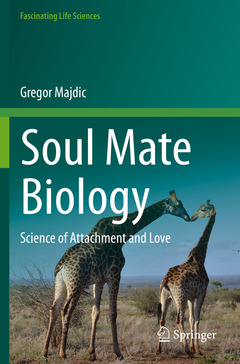Description
Soul Mate Biology, 1st ed. 2021
Science of attachment and love
Fascinating Life Sciences Series
Author: Majdic Gregor
Language: English
Subjects for Soul Mate Biology:
Keywords
Brain; Biology of love; hormones; genes; sex differences; monogamy
Publication date: 02-2022
220 p. · 15.5x23.5 cm · Paperback
Publication date: 02-2021
220 p. · 15.5x23.5 cm · Hardback
Description
/li>Contents
/li>Biography
/li>Comment
/li>
Love, one of the most profound of human emotions, love that accompanies us from puberty to old age, love that follows us from ancient times to modern, from ancient writings, through the Bible and the texts of medieval scribes to modern day books and movies. Through the millennia love has lost none of its secrecy, charm, attractiveness, craziness, even in this digital age, when we are overwhelmed by information.
But what is love? Where does this emotion originate? Are we humans the only living beings feeling this emotion? Can love be explained by some chemical reactions in our brains? Is love just a trick of nature or is love some kind of higher feeling? We do not have definite answers to any of these questions, nevertheless, neuroscience, behavioral science and others have provided us with some, at least partial answers. We know today a great deal more than ever before about what is happening in the brain when we are madly in love. We understand why our hearts beat faster whenwe see the person we love, we know why we sweat and why we feel anxious when the loved one is away from us, and we have some ideas about how feelings of attachment form in the brain. This book guides you through the complicated labyrinth of genes, molecules and brain cells that are involved in the feelings of love, attachment, affection, and also simple sexual reproduction.
These books may interest you

A Philosophical History of Love 160.25 €



